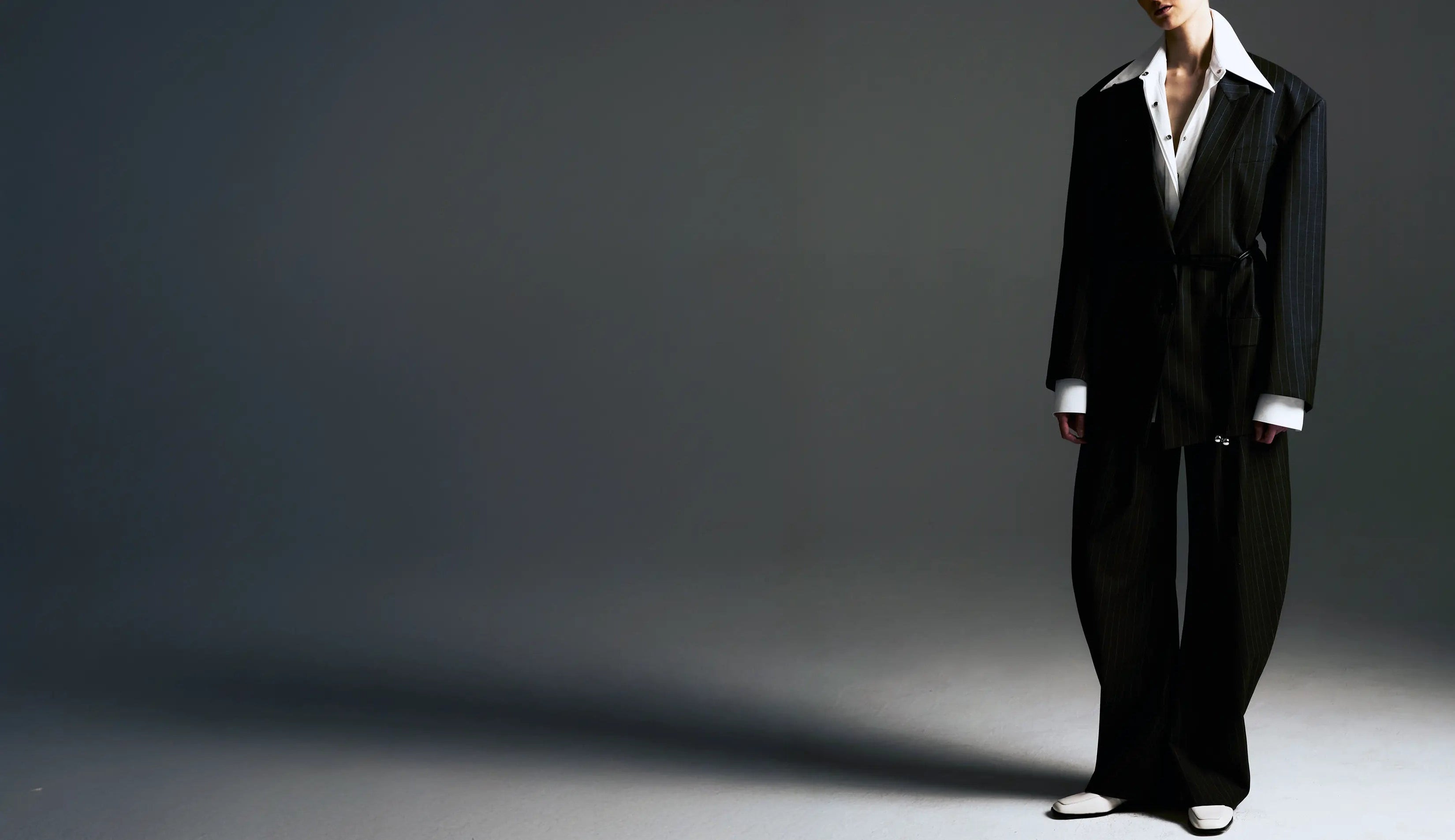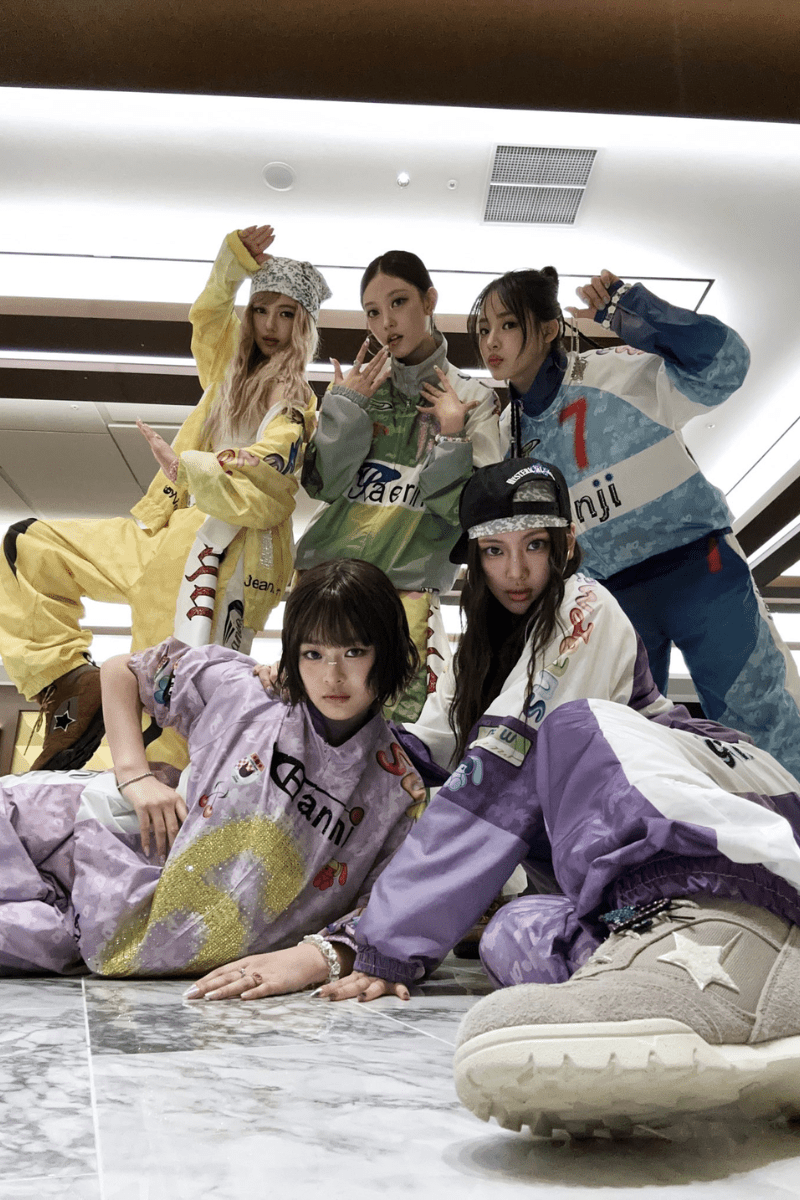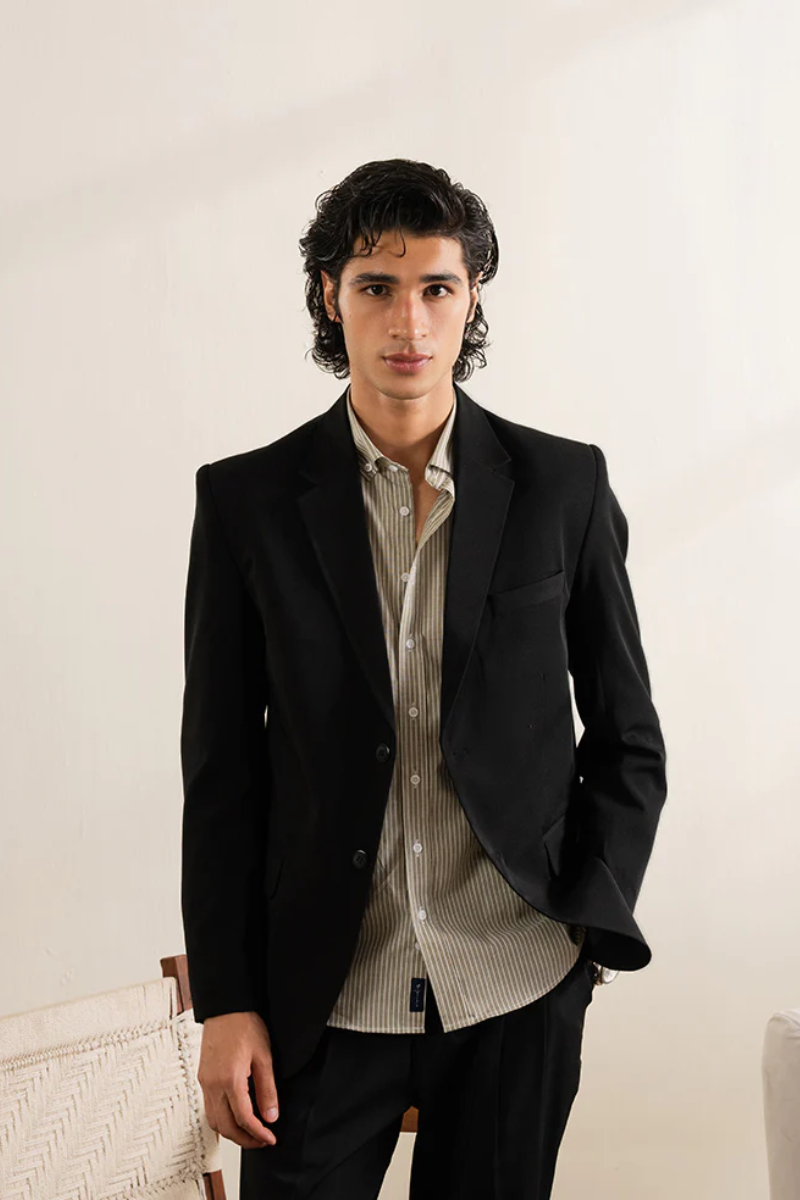Individual Expression Enhances Professional Authority
The sophisticated understanding of how personal style translates into professional credibility has fundamentally altered the landscape of workplace suiting. Contemporary professionals recognize that authentic self-expression, when executed with technical precision, amplifies rather than undermines professional authority. The careful construction of her jacket's shoulder line creates presence without aggression, demonstrating how tailoring details can communicate competence while maintaining personal authenticity.
The integration of individual personality into professional suiting requires the same precision that defines hand-canvassed suit construction—every element must serve both functional and expressive purposes simultaneously. Her choice of subtle texture variation in the fabric creates visual interest that reads as sophistication rather than distraction, proving that personal expression can enhance rather than compromise professional presentation when executed with cultural intelligence.
The evolution from generic business wear to personalized professional expression reflects broader cultural shifts toward authenticity in professional relationships. Clients, colleagues, and collaborators increasingly value genuine connection over performative professionalism, creating opportunities for individuals who can balance personal authenticity with professional competence. This balance requires understanding how different style elements communicate various aspects of personality while maintaining appropriate professional boundaries—the sartorial equivalent of transitioning from BlackBerry's corporate uniformity to iPhone's personalized interface without losing productivity.
Contemporary workplace culture rewards those who can demonstrate both technical competence and authentic personality, creating demand for suiting that supports rather than masks individual identity. The princess seams in her jacket provide structure while allowing for natural movement, metaphorically representing how well-designed professional identity provides framework for authentic self-expression rather than constraining it.
The success of this approach depends on understanding how different industries, corporate cultures, and professional contexts require different expressions of authenticity. What works in creative fields may not translate to traditional finance, but the underlying principle remains consistent—professional success increasingly depends on the ability to present authentic self while meeting contextual requirements for competence and reliability.
Technical Precision Serves Expressive Goals
The sophisticated tailoring techniques that enable contemporary suiting to serve expressive goals would impress the craftspeople who built the great fashion houses of the early 20th century. Every technical element—from canvassing choices to seam placement—must contribute to both structural integrity and personal expression. The careful construction of her jacket's lapel creates a frame for her face that enhances rather than overpowers her natural features, demonstrating how technical precision can serve aesthetic and expressive goals simultaneously.
The integration of advanced tailoring techniques with contemporary lifestyle demands creates new categories of professional suiting that support rather than restrict natural movement and expression. Her jacket's construction incorporates stretch elements that maintain shape while accommodating the dynamic requirements of contemporary work environments—from video conferences to collaborative meetings to public presentations.
The fabric selection process for contemporary professional suiting requires understanding how different materials behave under various lighting conditions, from natural office light to video conference cameras to evening networking events. The textile chosen for her ensemble maintains consistent appearance across these various contexts while providing the comfort and durability required for demanding professional schedules.
Contemporary suiting construction incorporates lessons learned from athletic wear development—moisture management, temperature regulation, and recovery properties that ensure garments maintain pristine appearance throughout extended wear. These technical innovations enable professionals to maintain polished presentation while engaging in the physical and mental demands of contemporary work environments.
The attention to construction details that enable longevity becomes increasingly important as conscious consumers seek sustainable alternatives to disposable fashion. The hand-canvassed construction in quality suiting provides durability that justifies investment while creating garments that improve with wear rather than deteriorating. This approach treats professional suiting like architectural investment rather than temporary costume.
Cultural Intelligence Guides Style Decisions
The sophisticated understanding of how cultural context influences professional presentation has become essential for contemporary career success. The same cultural fluency that enables effective communication across diverse professional environments now applies to sartorial choices that must navigate various cultural expectations while maintaining personal authenticity. Her styling choices demonstrate awareness of how different professional contexts require different expressions of competence and personality.
The evolution of professional dress codes reflects broader cultural shifts toward inclusion and authenticity, creating opportunities for individuals who understand how to honor cultural expectations while expressing personal identity. This balance requires the same nuanced understanding that defines diplomatic communication—recognizing what different audiences value while maintaining authentic self-expression.
Contemporary professional environments increasingly reward those who can demonstrate cultural intelligence through their presentation choices, understanding how different style elements communicate various values and priorities. The subtle details in her ensemble—from button selection to accessory choices—reflect understanding of how small elements can signal cultural awareness and professional sophistication.
The globalization of professional environments creates additional complexity around cultural sensitivity in professional presentation. Understanding how different cultures interpret various style elements becomes crucial for professionals who work across international boundaries or in diverse teams. This knowledge enables more effective communication and relationship building while avoiding unintentional cultural misunderstandings.
The integration of cultural intelligence into professional style decisions creates opportunities for meaningful connection across diverse professional environments. When individuals understand how their presentation choices communicate respect for different cultural values, they can build stronger professional relationships while maintaining authentic self-expression.
Technology Integration Transforms Wardrobe Management
The digital tools that now support professional wardrobe management would astonish the executives who relied on traditional closet organization systems. Contemporary professionals use apps to track outfit performance across different contexts, analyze which combinations generate positive responses, and plan wardrobes that support their professional goals while expressing personal identity. Her curated approach to professional suiting reflects understanding of how systematic wardrobe management can support both efficiency and expression—the evolution from flipping through Rolodexes in SoHo offices to managing entire professional identities through smartphone algorithms.
The integration of smart mirrors and virtual styling tools allows professionals to experiment with different looks and receive feedback before making significant wardrobe investments. These technologies help individuals understand how different style elements work together while providing objective analysis of which combinations achieve desired professional and personal goals. The transformation parallels the shift from borrowing CDs from colleagues to discover new music to having Spotify's algorithm predict preferences—technology amplifies rather than replaces human intuition.
The data analytics available through contemporary shopping platforms provide insights into how different style elements perform across various professional contexts, helping individuals make more informed decisions about wardrobe investments. This information enables more strategic approach to professional suiting that balances individual expression with demonstrated effectiveness, much like how music discovery evolved from Tower Records browsing in the Village to algorithmic recommendations that understand personal taste patterns.
The ability to document and analyze outfit performance through digital tools creates opportunities for continuous improvement in professional presentation. Professionals can track which combinations generate positive responses in different contexts, enabling more strategic approach to wardrobe development that supports both personal expression and professional advancement. The process resembles how musicians evolved from four-track recording in Brooklyn basements to ProTools precision—technology serves creativity rather than constraining it.
The integration of sustainability tracking tools helps conscious consumers understand the environmental impact of their wardrobe choices while maintaining professional presentation standards. These tools enable more informed decision-making about quality investments versus temporary purchases, supporting both personal values and professional requirements.
Investment Strategy Replaces Impulse Purchasing
The sophisticated approach to professional wardrobe development that characterizes contemporary suiting emphasizes strategic investment over impulse purchasing. The same financial planning principles that guide retirement savings now apply to wardrobe development—understanding how quality pieces can provide long-term value while supporting evolving professional goals. Her carefully curated ensemble represents investment in pieces that will serve multiple professional contexts while maintaining relevance as her career evolves.
The cost-per-wear calculation that guides contemporary wardrobe investment requires understanding how different pieces can serve multiple professional contexts while maintaining appropriate presentation standards. This analysis enables more strategic approach to wardrobe development that balances individual expression with financial efficiency.
The quality construction that justifies investment in professional suiting provides durability that supports long-term wardrobe strategy while ensuring garments maintain pristine appearance throughout extended wear. The floating canvas construction in her jacket will maintain shape and appearance for years, providing better value than multiple lower-quality pieces that require frequent replacement.
The resale value of quality professional suiting has created secondary markets that support sustainable consumption while enabling access to premium pieces. Understanding how different brands and construction methods maintain value over time helps individuals make more informed investment decisions that support both personal goals and financial efficiency.
The rental and subscription services that now serve professional wardrobe needs provide alternatives to ownership for pieces that serve specific contexts or occasions. These services enable access to premium suiting for special professional events while maintaining sustainable consumption practices for regular wardrobe needs.
Personal Brand Development Through Sartorial Consistency
The sophisticated understanding of how consistent visual identity supports professional brand development has transformed how individuals approach wardrobe planning. The same branding principles that guide corporate identity now apply to personal professional presentation—developing recognizable style elements that support career goals while expressing authentic personality. Her consistent approach to professional suiting creates visual identity that colleagues and clients can recognize and remember.
The integration of personal values into professional presentation creates opportunities for authentic connection with clients and colleagues who share similar priorities. When individuals understand how their wardrobe choices can communicate their values while maintaining professional competence, they can build stronger professional relationships based on genuine compatibility.
The development of signature style elements that remain consistent across different professional contexts creates visual continuity that supports personal brand recognition. This consistency enables more effective networking and relationship building while providing framework for authentic self-expression within professional requirements.
The evolution of personal style that reflects career growth and changing priorities requires understanding how different style elements can adapt to new professional contexts while maintaining recognizable identity. This balance enables individuals to grow professionally while maintaining authentic self-expression throughout career transitions.
The integration of personal brand development with professional wardrobe planning creates systematic approach to career advancement that treats visual identity as strategic asset rather than superficial concern. This understanding enables more effective professional development while maintaining authentic self-expression throughout career evolution.
Sustainable Practices Influence Material Choices
The environmental consciousness that drives contemporary consumption decisions has fundamentally altered how professionals approach wardrobe development. The same sustainability principles that guide other lifestyle choices now apply to professional suiting—understanding how material choices, construction methods, and consumption patterns can support environmental goals while maintaining professional presentation standards. Her thoughtful approach to fabric selection reflects understanding of how sustainable practices can enhance rather than compromise professional presentation.
The integration of sustainable materials into professional suiting requires understanding how different fibers and production methods affect both environmental impact and garment performance. Contemporary textile innovations provide sustainable alternatives that maintain the appearance and durability required for professional presentation while reducing environmental footprint.
The circular economy principles that now influence fashion consumption create opportunities for extending garment lifecycle through repair, alteration, and resale. Understanding how different construction methods and materials support these practices enables more sustainable approach to professional wardrobe development.
The transparency in supply chain information that contemporary consumers demand enables more informed decision-making about the environmental and social impact of wardrobe choices. This information helps professionals align their wardrobe decisions with their values while maintaining appropriate professional presentation.
The integration of sustainable practices into professional wardrobe management creates opportunities for meaningful conversation and connection with colleagues and clients who share environmental concerns. When individuals can demonstrate their values through their wardrobe choices, they can build stronger professional relationships based on shared priorities.
Future Evolution of Professional Expression
The trajectory of professional suiting development suggests continued evolution toward greater individual expression while maintaining appropriate professional standards. The same technological innovations that enable contemporary customization will likely create even more sophisticated options for personal expression within professional contexts. Her approach to professional suiting represents current best practices while pointing toward future possibilities for authentic self-expression in professional environments.
The integration of smart textiles and responsive materials into professional suiting will likely create new opportunities for dynamic expression that adapts to different professional contexts throughout the day. These innovations could enable garments that provide different levels of formality or different aesthetic expressions based on professional requirements.
The customization technologies that now enable individual fit and style preferences will likely expand to provide even more sophisticated options for personal expression within professional requirements. This evolution could enable professionals to create truly unique professional identities while maintaining appropriate presentation standards.
The sustainability innovations that drive contemporary fashion development will likely create new categories of professional suiting that support environmental goals while maintaining professional presentation standards. These developments could enable more conscious consumption patterns while supporting authentic self-expression.
The global integration of professional environments will likely create new requirements for cultural sensitivity and adaptability in professional presentation. Understanding how to navigate these complexities while maintaining authentic self-expression will become increasingly important for career success.
The sophisticated balance that contemporary professional suiting achieves between individual expression and professional advancement represents more than fashion evolution—it embodies a fundamental shift in how authenticity and competence intersect in professional environments. Her carefully constructed ensemble demonstrates that technical precision and personal expression can enhance rather than compete with each other when applied with cultural intelligence and strategic thinking.
The future of professional suiting lies not in choosing between conformity and individuality, but in finding increasingly sophisticated ways to integrate both impulses into coherent professional identity. Like the canvassing techniques that provide invisible support for superior tailoring, the best professional presentation creates framework for authentic self-expression while meeting contextual requirements for competence and reliability. The evolution continues, driven by professionals who understand that authentic expression, when executed with precision and cultural awareness, becomes the foundation for sustainable career success.




